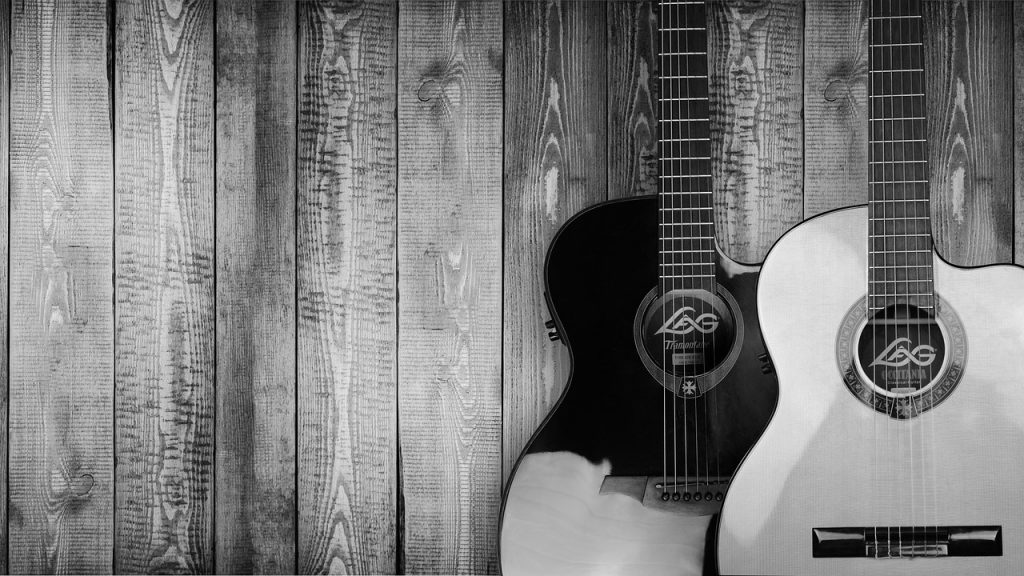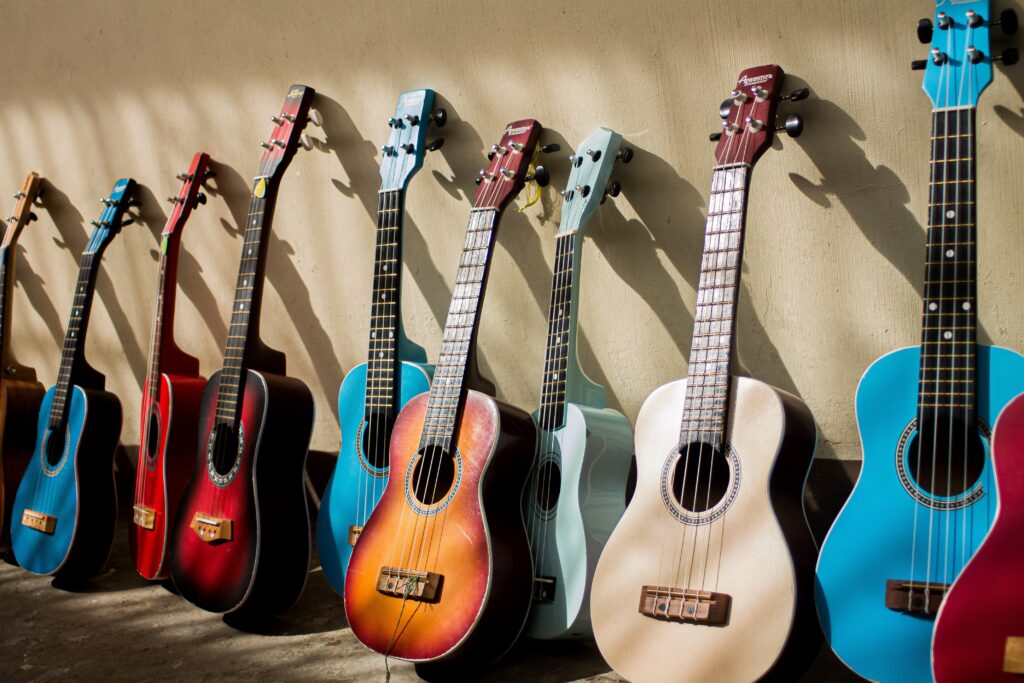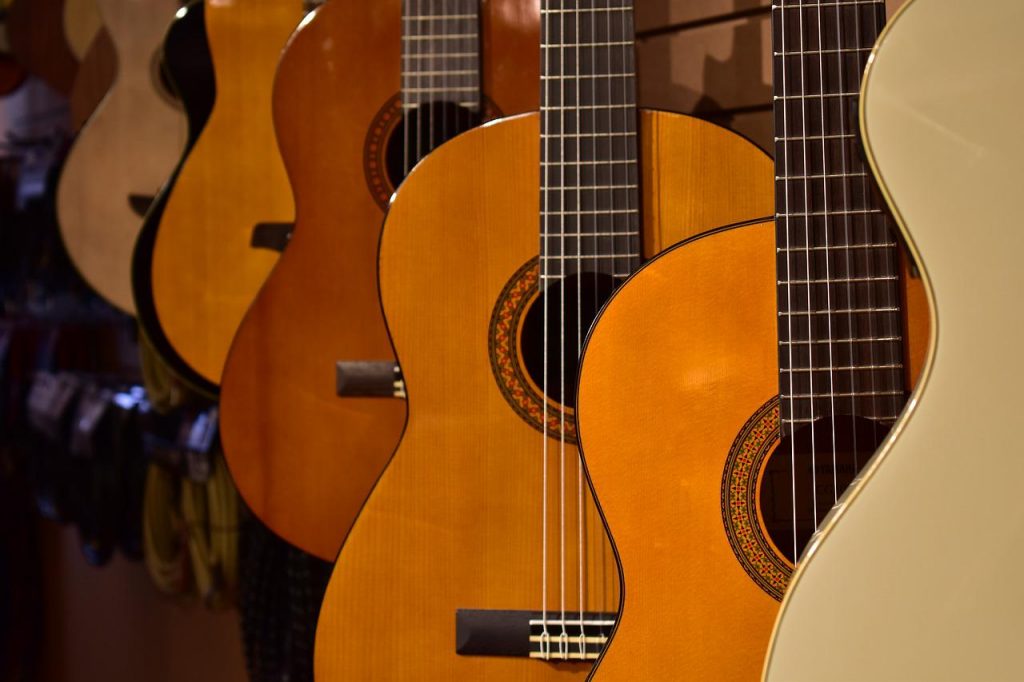Do you have a guitar that could use a fresh coat of paint, but you’re unsure of how to do it? Don’t worry – repainting a guitar may sound intimidating, but with some patience and the right materials, it’s possible!
In this blog post, we’ll be taking an in-depth look at every step of the painting process so if you’ve been wanting to give your trusty axe a facelift then get ready for lots of helpful advice.
Get ready to take on your next big project; let’s find out how to quickly repaint your guitar this weekend!
What are the materials needed to repaint a guitar?
When it comes to how to repaint a guitar, the following materials are essential;
- Sanding paper or sanding sponge
- Fine grit, medium, and coarse sandpaper
- Orbital sander
- Masking tape
- Screwdriver
- Vacuum cleaner
- Cloths
- Allen wrenches
- Wire cutters
- Grain filler
- Mineral spirits
- White Primer
- Spray cans or paint spray guns
- Clear color coats
- Ultra-fine sandpaper pads
- Dust mask and eyeglasses
- Soldering iron as well as solder
How to repaint a guitar correctly?
Dissemble the guitar
This is usually the first step in repainting any electronic device.
- Remove your guitar strings by clipping the strings away with a pair of wire or string clippers.
- Remove the guitar neck by unscrewing the bolts on its neck and gently wiggle the neck free. This is only applicable if the guitar’s neck isn’t glued to the body.
Remove the hardware
Next is to disassemble all hardware and fasteners on your guitar, keep them safely in separate plastic bags, and label them appropriately.
Doing this will help prevent confusion or misplaced parts when you want to reassemble the guitar.
Remove the pickguard
This is a necessary step in repainting your guitar as it allows you to paint underneath it. Depending on the guitar you have, you may need to remove the knobs and the pickup selector cap to be able to remove the pickguard. To do this, use a screwdriver set and gently loosen the screws.
Remove remaining hardware and electronics
Now, take off the remaining hardware, including the strap buttons, bridge, saddle, tremolo cover, pickup covers, tuners, output jack, potentiometers, and pickups.
We advise you to take pictures of these electronics so you know exactly where they come from and to be able to fix them appropriately. Be extremely careful with the delicate parts.
Sand the guitar and remove all dust
- Using sanding paper or sponge, sand the existing finish on the guitar.
- Then, use an orbital sander to remove most of the finish. Don’t use paint strippers as they are highly toxic and can make your work very messy.
- Next, use fine-grit sandpaper to smooth out the wood on the guitar.
- Lastly, use a vacuum cleaner with a hose attachment to remove the dust that appears after sanding, or wipe them with a damp cloth.
Use a grain filler and primer
Grain fillers are especially useful when working on mahogany or other porous woods; they fill the gaps that will naturally occur in the wood grain without altering the performance of the wood.
- Apply some grain fillers to the guitar’s body, then use mineral spirits to remove the oils on it. Wait for a few minutes for it to dry to avoid ruining the new finish with your fingers.
- Next, add a few coats of primer – two to three thin coats – to your guitar that matches the paint you will use on them. This will help prevent grain from showing through the paint.
Paint the guitar
In repainting a guitar, you can use nitrocellulose or water-based paints. Be sure to apply the coat as thin as possible, apply the second layer after the first layer has dried, etc.
Apply a clear coat
Before applying a clear coat of paint to your guitar, ensure that the colored coat of paint has completely dried. It is best to leave the colored coat for one week before applying a clear coat.
If you chose nitrocellulose or a polyurethane finish, wait for about three to four weeks for the whole paint to completely harden before reassembling the guitar. But, if you used an oil-based finish, you’ll only need to wait a few days for everything to harden.
Polish the finish
Wet-sand the hardened finish starting with a fine grit (400) to a more rough grit (2000). The grit process should go from 400 grit, 600 grit, 800 grit, 1000 grit, 1200 grit, 1500 grit, and 2000 grit.
Be careful not to sand through the clear color coat and into the paint.
Reassemble your guitar
Next, reassemble your guitar’s hardware. Connect all snipped wires and insert them back correctly using the snapped pictures as a guide.
Now, you can return to using your guitar.
| Step | Description |
|---|---|
| 1 | Remove all hardware and strings from the guitar. |
| 2 | Sand the entire guitar to remove the old finish and create a smooth surface for the new paint to adhere to. |
| 3 | Apply a wood filler to any dents or scratches in the wood, and sand again once it’s dry. |
| 4 | Apply a coat of primer to the guitar, and let it dry completely. |
| 5 | Apply the first coat of paint, and let it dry completely. |
| 6 | Apply additional coats of paint until you achieve the desired color and coverage, allowing each coat to dry completely before adding the next. |
| 7 | Once the final coat of paint is dry, apply a clear coat to protect the finish. |
| 8 | Reattach all hardware and restring the guitar. |
What kind of paint is used on guitars?
When it comes to repainting a guitar, the type of paint chosen is very important. Generally speaking, enamel-based paints are best for guitars because they provide a durable finish that resists scratches and chips.
Additionally, enamel paints dry quickly and have great adhesion properties which help ensure your new paint job will last.
It’s also important to note that you should only use water-based paints when painting a guitar. Solvent-based paints can release harmful fumes while they dry and cause damage to both the instrument itself as well as your health.
Similarly, oil-based paints can be difficult to work with and can leave behind an uneven finish or cause bubbling or cracking in the final product.
To achieve the best results possible, consider investing in an automotive lacquer or urethane paint specifically designed for automobiles but safe enough to use on musical instruments. Automotive lacquers come in a variety of colors and finishes and provide excellent protection against environmental factors like heat and humidity.
By using the correct type of paint on your guitar, you’ll not only ensure that your instrument looks its best – you’ll also give yourself peace of mind knowing it will remain protected from everyday wear and tear for years to come.
Will painting a guitar affect the sound?
Yes, it can. Painting a guitar adds weight to the body, which affects its resonance and acoustic properties. This is why many professional players opt for lighter woods such as ash and mahogany when building custom instruments.
The thickness of the paint also plays a big role in affecting the sound of your instrument. A heavy coat of paint will absorb more energy from strings and dampen vibrations that give guitars their distinctive tone.
Applying multiple layers of thinner coats will provide better protection while still allowing tones to travel freely through the body and neck.
Additionally, a professional painter should always use high-quality paints that are specifically designed for musical instruments.
Cheap or generic paints may contain harsh chemicals or solvents that can damage or even corrode delicate components like pickups or circuitry. If you’re not sure what kind of paint to use, consult with an experienced luthier before starting your project.
Overall, painting a guitar can have an impact on its tone but choosing the right materials and techniques can help mitigate any losses in sound quality while still preserving your instrument’s unique aesthetic appeal.
With patience and careful attention to detail, you’ll be able to repaint your guitar without compromising its iconic sound.
Does repainting a guitar devalue it?
Repainting a guitar can be a great way to revitalize an old instrument or give it a unique look, but it is important to consider whether doing so could affect its value.
Generally speaking, if a guitar is painted correctly and with good quality materials, repainting should not devalue the instrument significantly. However, some areas of consideration need to be taken into account to ensure that any value associated with the original paint job is preserved.
For instance, original artwork or designs on the guitar’s body may add significant value and should be preserved as much as possible.
Additionally, some vintage guitars may have unique markings or scars that add character, which could be lost if repainted with too thick of a coat.
Finally, collector’s editions or limited runs may also have an additional value associated with them and should not be altered without prior research to protect any potential investment worth.
How much does it cost to have a guitar repainted?
The cost of having a guitar repainted will vary depending on the type of paint used, the complexity of the project, and any additional services such as clear coating. Generally speaking, it can range anywhere from $100 to upwards of $500 or more!
It’s important to note that while this may seem like an expensive endeavor, it can be well worth it in terms of extending the life span and preserving the value of your guitar.
Additionally, if you’re looking for a budget-friendly option then there are also plenty of DIY tutorials available online with detailed instructions for every step in the process. However, if you’re new to painting and don’t want to take on such a complex project alone – it’s always best to hire a professional for peace of mind.
How do you tell if a guitar has been repainted?
Repainting a guitar can be done so well that it’s almost impossible to tell that it was ever repainted. Generally, you’ll have to look for signs of uneven coverage or brush strokes to spot any discrepancies.
One major thing to look out for is the hardware – if the hardware looks relatively new then this could be an indication that the body has been recently painted as well.
Additionally, if you’re considering purchasing a used guitar then make sure to check underneath any removable pick guards or plates where there may be evidence of previous paint jobs.
Finally, if you’re still unsure then consulting an expert is always a good idea! They should be able to tell if the job was professionally done and provide additional insight into any potential issues.
How do you clean a painted guitar?
Cleaning a painted guitar should be done with care, to not damage the paint job. It’s best to use a soft cloth and warm water, with mild soap if necessary.
If you’re cleaning off stubborn stains then try using a mixture of baking soda and water before resorting to harsher chemicals.
Additionally, always avoid using any abrasive items like steel wool or sandpaper as these can easily scratch or remove paint from the body of your instrument.
Finally, make sure that no water is getting inside the body of your guitar – if it does then this could cause significant damage to internal components such as pickups or wiring.
Overall, gently wiping down your guitar body regularly with a soft cloth is the best way to maintain its new look while also keeping dust and dirt away.
Conclusion
Repainting a guitar is more or less a DIY task (also learn about how to make a guitar capo). With this concise guide, we believe that you now know how to repaint your guitar yourself.






